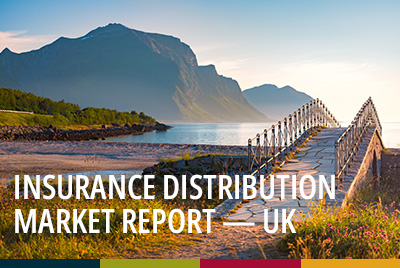Competitive pressure on insurance brokers is increasing from three sides. First, local competitors are consolidating at a rapid pace. Second, international broker platforms are moving into national markets through acquisitions, with tied agents and bancassurance building hybrid digital-physical service networks. And third, direct channels and online aggregators are eyeing market segments like SMEs where brokers have a strong foothold.
Across the European market, brokers of all sizes are consolidating – from small local books joining forces, to expanding national champions and international broker platforms. Larger competitors can build efficient, modern businesses and leverage internationalised insurance markets to offer a wider range of products for their customers. EU-regulation on passporting has facilitated cross border activity by insurers, though insurance distribution has up until the past years remained a predominantly localised industry.
Only the last few years has seen the emergence of international broker platforms in the European market. International broker platforms like The Ardonagh Group and Söderberg & Partners build large global networks of brokers through local acquisitions.
The consolidation of brokers in both national champions and international platforms is strongly driven by capital flowing into the sector. Predominantly this takes the shape of private equity and strategic capital, though other types of capital are present as well. For example, in the Netherlands, several insurers have become broker consolidators themselves.
Interest from capital investors in the European broker sector is grounded in a combination of factors. First and foremost comes the profitability and robustness of the broker business model. A second relevant factor is the fragmented but increasingly digitised nature of broker business which creates a strong potential for synergies.
Aside from consolidating national and international brokers, tied agents’ and banks’ branch networks are being re-organized across European countries. The pandemic has fast-tracked the closure of brick-and-mortar operations and stressed the need for more hybrid operations. Now, physical branches are being more tightly integrated with digital channels to build ‘multi-access’ customer journeys that support customer acquisition and can serve changing customer needs.
Finally, pressure on brokers is increasing from direct channels and online comparators. These competitors continue to widen their scope beyond heavily commoditised private lines to include (small) commercial market segments like professionals, freelancers, very small enterprises (VSEs) and small and midsize enterprises (SMEs). VSEs and SMEs are generally considered the core of an intermediaries’ book and a path to future growth in line with customers’ businesses.
Examples of online comparators targeting these segments are Simple+ in France and FinanzChef24 in Germany. Due to advances in data and underwriting, products for these segments can be offered directly with a more capacity for online customization. Though these offerings often remain limited to standard risks and relatively easy to insure business activities.
